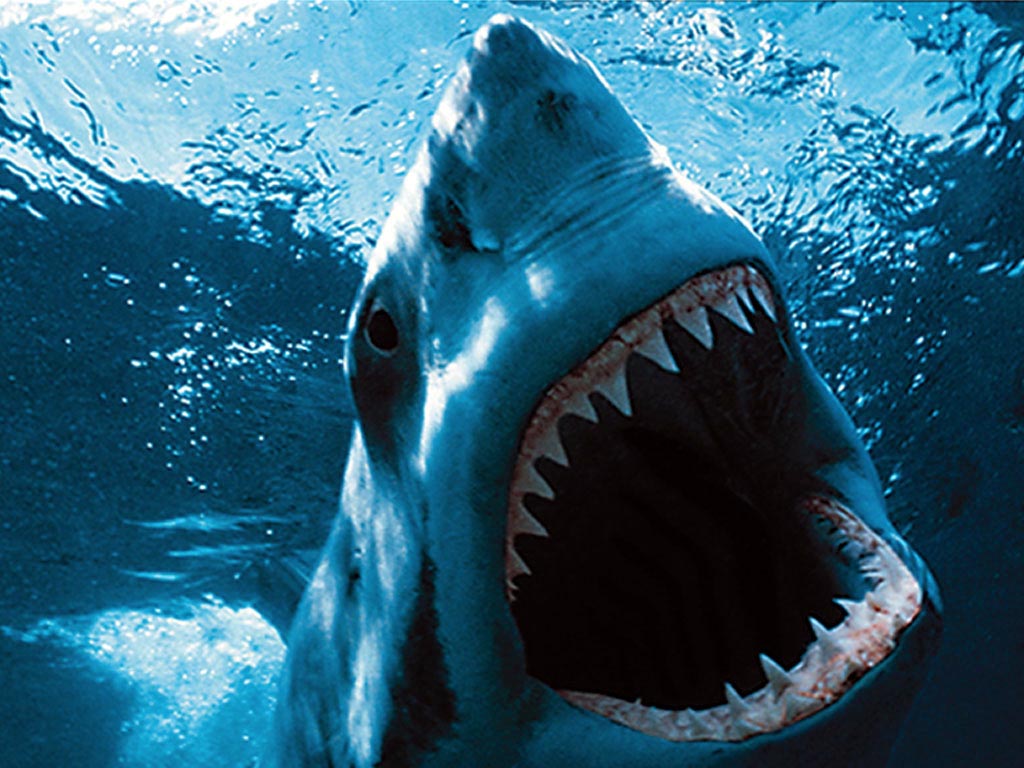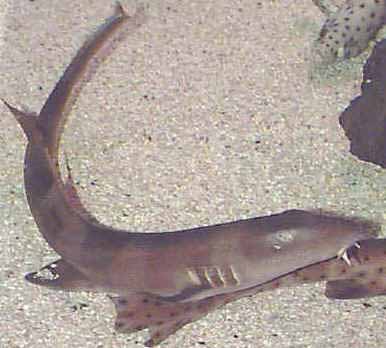

The Cookie-cutter Shark is named after the cookie-shaped wounds that it leaves on the bodies of larger animals (see Related links, below).
This species has a small cigar-shaped body (up to about 50 cm in length), a conical snout and two low, spineless dorsal fins positioned posteriorly on the body. It is dark brown dorsally, lighter below, and has a distinct dark collar around the gill region (visible in the middle image). The entire ventral surface, with the exception of the dark collar, is covered in a dense network of tiny photophores, which in life produce an even greenish glow. The genus name Isistius is derived from Isis, the Egyptian goddess of light.
This species has small, erect teeth in the upper jaw and large triangular teeth in the lower jaw. The Cookie-cutter Shark attaches itself to its prey with its suctorial lips, and then spins to cut out a cookie-shaped plug of flesh from the larger animal.
A recent theory (Widder, 1998) suggests that the feeding behaviour of the Cookie-cutter Shark may be even stranger than originally thought. It is counterilluminated, a dark colour above and lighter below (due to the light organs).
The dark collar is not illuminated, so would be silhouetted against the light from above. The theory suggests that this dark area would look like a small fish from below, and the Cookie-cutter Shark would wait for a larger predator to attack the "small fish". As the predator is about to attack, the Cookie-cutter Shark would turn and attack the attacker. The forward motion of the larger animal may even assist the Cookie-cutter Shark in removing the plug of flesh.
In addition to plugs of flesh from larger animals, the Cookie-cutter Shark is also known to eat squid. There are even reports of this species leaving crater-marks on the sonar domes of submarines.
Cookie-cutter Sharks are recorded from scattered localities around the world. In Australia they have been recorded from Queensland, New South Wales, Tasmania and Western Australia. They vertically migrate, being found in deep water, probably below 1000 m during the day, and migrating into surface waters at night.











.jpg)



